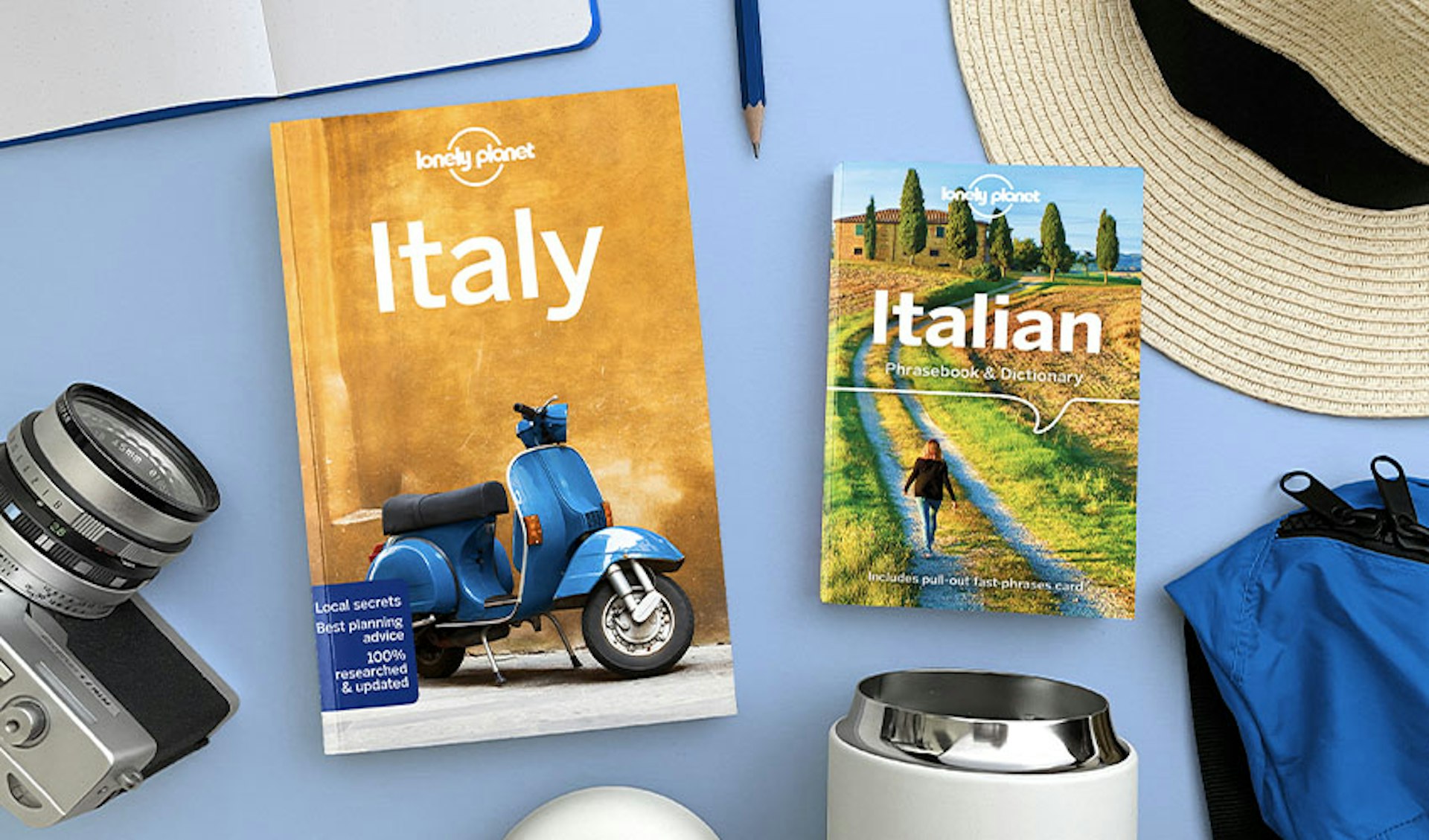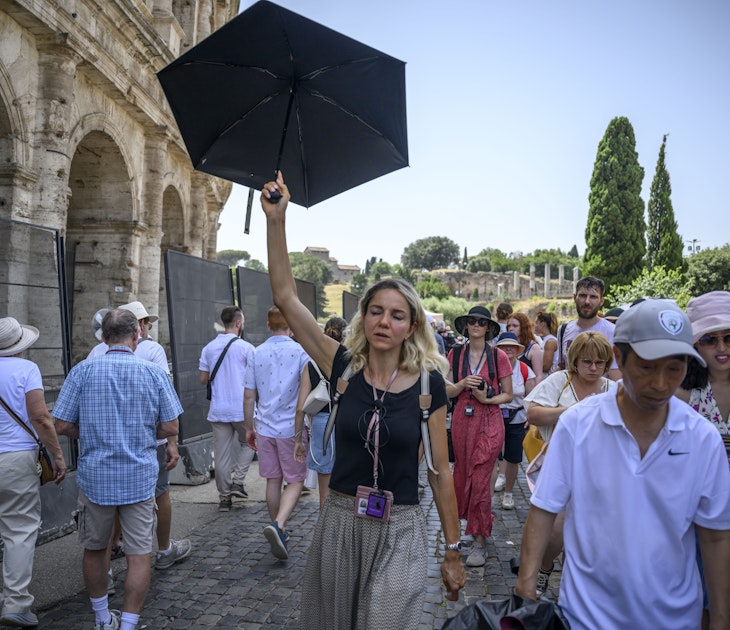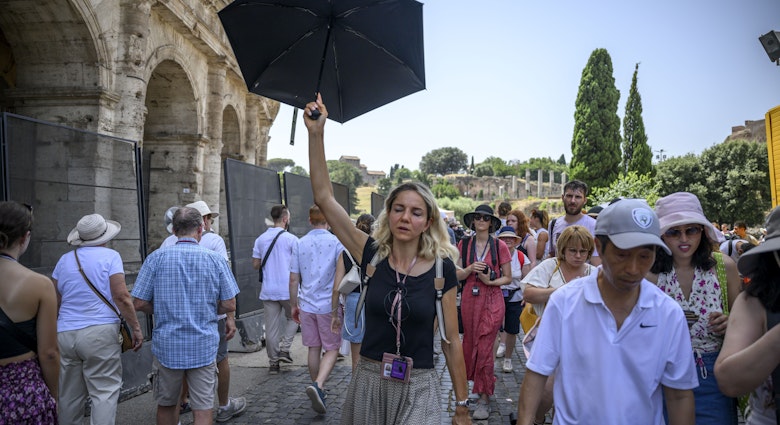Between the comfortable and scenic trains plus the comprehensive bus network, it’s possible to get around much of Sicily without your own vehicle. And prices on public transportation are very cheap, making it a great budget option. Still, for maximum flexibility in your explorations, you can’t beat having a car, although that comes with both environmental and financial costs.
There are good train services for parts of the island
The train is a delightful way to travel on Sicily, although large swaths of the island are not served. The main line runs east from Palermo to Messina and then south to Syracuse via Catania. Trains on these routes are fast and comfortable. A web of secondary lines with much slower trains and more limited service covers some other parts of the island.
Some night trains and daytime fast trains serving the lines to Palermo and Syracuse use the train ferry at Messina to link up to the rail network on the mainland. You can ride as far afield as Naples, Rome, Florence, and Milan without changing trains.
Fares are cheap. For instance, Palermo to Catania is only €13.50 ($15.60) and the ride takes four hours (just 20 minutes longer than the bus) and it is much more scenic. Intercity (IC) or Intercity Night (ICN) trains are the fastest, stopping only at major stations; espresso trains stop at all but the most minor stations, while regionale trains are the slowest of all, halting at every stop.
While the state-owned Trenitalia operates all regular trains on Sicily, those that circle the base Mt Etna are run by the private Ferrovia Circumetnea.
Buses are the only transportation to interior towns
Away from the main coastal train routes, buses are generally the best way of getting around Sicily. Buses offer faster, more direct service on certain intercity routes where train connections are inconvenient, such as Catania to Agrigento, Syracuse to Palermo, or Palermo to Trapani.
Buses are the only form of public transportation serving many interior towns. In rural areas services are sometimes linked to school hours and market opening times, which can mean leaving incredibly early or finding yourself stranded after mid-afternoon. Sunday schedules are often meager at best.
In larger cities, the main intercity bus companies have ticket offices or operate through agencies. In smaller towns, bus tickets are often sold in bars or on the bus. Reservations are not necessary, but buying a ticket in advance can ease time-sensitive journeys such as those to an airport. Compare services online, using services like Omio
Sicily’s major bus companies cover most destinations: They are: AST (Azienda Siciliana Trasporti); Interbus; SAIS Autolinee; SAIS Trasporti; and Salemi.

Ferries run year-round to offshore islands
Sicily’s offshore islands are served by traghetti (ferries) and aliscafi (hydrofoils). To the Aeolian Islands, services run from Milazzo and Messina; to the Egadi Islands, from Trapani and Marsala; to Ustica, from Palermo; and to the Pelagic Islands, from Porto Empedocle (near Agrigento).
Many services run year-round, although they are pared back considerably in winter and can be affected by adverse sea conditions. Overnight ferries offer cabins for an extra cost. Deck class is only sold in summer. Larger ferries to/from the mainland and the islands carry vehicles. Operators include Liberty Lines and Siremar. Check schedules and compare fares at Ferryhopper.
Car is ideal for exploring the countryside
A car is the best way to explore Sicily’s countryside, remote hill towns, seaside archeological sites and much more. However, having your own wheels on the island does come with certain headaches, not the least of which are the carefree attitudes locally about traffic rules. Drivers can be aggressive and/or sloppy in their driving habits.
Most roads are in good condition and some cross-country strade statali (state roads) roads actually seem over-engineered with extraordinary amounts of concrete used in their construction. Car ferries run constantly between the Italian mainland and Sicily. Parking in cities and towns can be very difficult, with few available spots. Staying at accommodation that includes parking can offer great relief when you’re worn out from a day of driving.
Tips for renting a car: Major international car rental firms can be found at airports, city centers, and tourist areas. Motorcycles, motorbikes, and scooters are usually available for rent from local agents in resort areas. Almost all drivers can use licenses valid in their home countries.

Road rules in Sicily
Important road rules when driving in Sicily include:
- Drive on the right
- Seat belts must be worn
- Helmets are required for riding all two-wheeled vehicles
- Do not use handheld mobile phones
- The speed limit in built-up areas off main roads is a mere 50km/h (approx 30mph).
Official taxis are expensive
Official taxis are white, metered, and expensive. If you need a taxi, you can usually find one in taxi ranks at train and bus stations. If you book a taxi by phone, you will be charged for the trip the driver makes to reach you. Rates vary from city to city. There’s also an array of supplementary charges for night-time/Sunday rides, to/from the airport, extra luggage, etc. Uber in Sicily only operates in Syracuse.
Riding a bike is a challenge on Sicily's narrow roads
There are no special road rules for cyclists, but you would be wise to carry a helmet and lights. Sicilian drivers may not be particularly considerate to riders, and with narrow roads and summertime heat, bike riding in Sicily can be challenging. Bike rental isn’t widespread, but it’s usually available at coastal resorts.
Planes serve the offshore islands
The only commercial flights within Sicily are those connecting the main island with smaller islands offshore. DAT flies to Lampedusa and Pantelleria in well under an hour from Sicily’s main airports (ferries take anywhere from a little over two hours to seven hours for these trips).
Larger cities have comprehensive transportation services
There are local transit systems in Sicily’s larger cities that operate comprehensive local bus services. In addition, Palermo has a tram network and Catania has a metro.
Getting to and from the airport
Most flights serving Sicily use the airports in Palermo and Catania. Both are linked by public buses and trains to their respective city centers as well as taxis. In addition, the airports have agents for the major car rental firms.
Accessible transportation in Sicily
Prodded by EU and Italian legislation, transit on Sicily is becoming more accessible, although it still has far to go. Much of the island’s infrastructure presents challenges by way of steps, uneven sidewalks, too-small elevators (where they exist), and vehicles that cannot accommodate a wheelchair. It is possible to book wheelchair-accessible cabs with some taxi companies – specify this when you call to book in advance.
The train system can accommodate wheelchair users, although it may require intervention on the part of staff. Disabled assistance at stations, including for people in wheelchairs, is provided by Sala Blu, a branch of the state railway company. Contact them in advance for assistance. It's also useful to arrive at the station well in advance so as to coordinate any assistance needed getting on the train (accessibility varies widely across the Sicilian train network and trains). Once aboard, let the conductor know if you'll need assistance at your destination or arrange it in advance by contacting Sala Blu. Palermo’s trams are accessible. Other city transit systems and intercity buses are usually accessible.
You might also like:
15 things you cannot miss on your next trip to Sicily
The most scenic road trips in Sicily: volcanoes, baroque beauty and fabulous food
Why Sicily is a year-round destination




